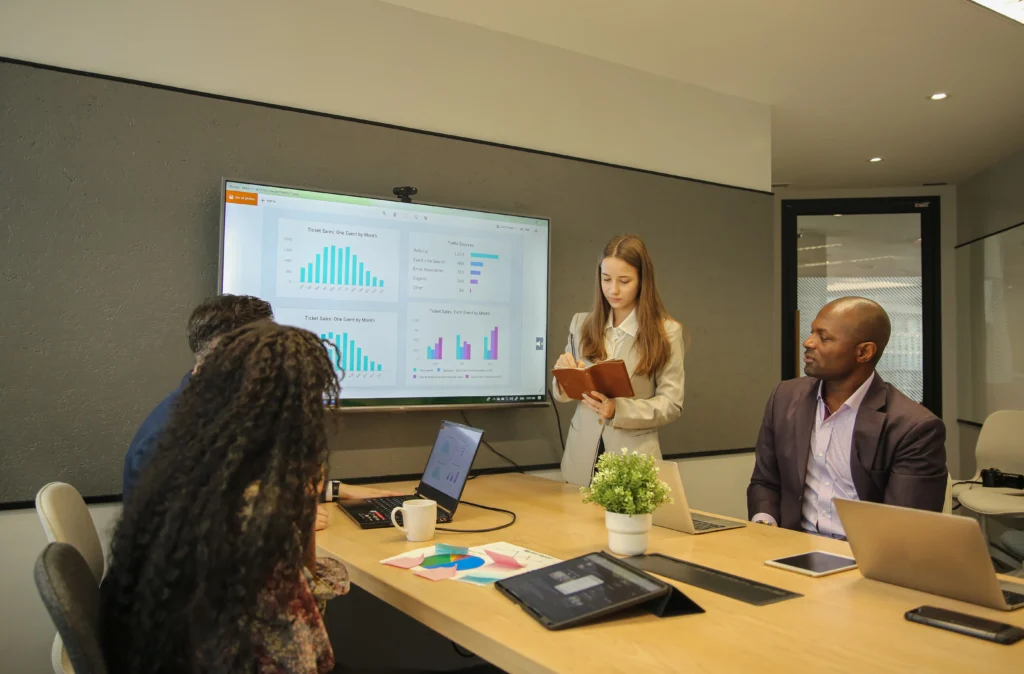
Data visualization plays a crucial role in transforming complex datasets into clear, actionable insights. A key element that often gets overlooked in the design of data visualizations is typography. Choosing the right font can make a huge difference in how your data is perceived, ensuring that your visuals are both readable and engaging. In this article, we will explore seven of the best fonts for data visualization projects, considering factors such as legibility, versatility, and aesthetic appeal. Let’s dive in!
Before we delve into the specific fonts, it’s important to understand why typography is so critical in data visualization. The main goal of data visualization is to convey information quickly and clearly. A well-chosen font improves readability, helps guide the viewer’s eye, and makes complex data more digestible. On the other hand, the wrong font can distract from the data, confuse the viewer, and even distort the message.
Here are some key considerations when selecting fonts for data visualization projects:
One of the most popular and widely recognized fonts, Helvetica, is a go-to for many designers when creating data visualizations. It is known for its clean, neutral, and highly legible appearance, making it perfect for data-heavy projects.
Helvetica is ideal for clean, modern data visualizations, especially in projects that prioritize minimalism. For example, it’s a great choice for line charts, bar graphs, and dashboards. Its simplicity ensures that data points remain the focus of the viewer’s attention.
Roboto is a popular sans-serif font designed by Google that balances geometric shapes with open curves, making it highly readable on both print and digital platforms.
Roboto is commonly used in data visualizations that require clarity, such as web-based dashboards, interactive charts, and mobile applications. Its versatility and readability make it an excellent choice for digital reports or presentations.
Arial is another sans-serif font that is often used in data visualization projects. It’s a classic choice for professional, no-nonsense design, and it’s widely available in most design software.
Arial is an excellent choice for corporate presentations and reports that feature numerical data, pie charts, or financial dashboards. It’s also suitable for basic text-heavy visualizations.
Lato is a sans-serif font that combines elegance with modernity, providing a friendly yet professional aesthetic. Its rounded edges make it particularly appealing for data visualization projects that require a softer, more approachable design.
Lato is great for data visualizations that need to strike a balance between professionalism and approachability, such as corporate reports or user-friendly dashboards.
Open Sans is a versatile, humanist sans-serif font designed by Steve Matteson. It is highly legible, even at small sizes, and is ideal for both print and digital data visualizations.
Open Sans is perfect for data visualizations that require clarity, such as statistical reports, dashboards, and presentations targeting a global audience.
Fira Sans is a sans-serif typeface that was specifically designed for readability on screens. With its large x-height and open letterforms, it’s a great choice for projects involving dense data.
Fira Sans is perfect for interactive charts and graphs in web applications, especially for projects that involve real-time data updates or complex statistical analysis.
Source Sans Pro is an open-source typeface designed by Adobe. It’s widely used in user interfaces and has a professional yet approachable look that works well in data visualizations.
Source Sans Pro is ideal for infographics, dashboards, and reports that require a clean, professional appearance. It’s particularly suitable for projects that prioritize clarity and precision.
Choosing the right font for data visualization is essential for ensuring clarity and readability. Fonts like Helvetica, Roboto, Arial, Lato, Open Sans, Fira Sans, and Source Sans Pro all offer different strengths, depending on the type of data and the project goals. By selecting the right font, you can enhance the effectiveness of your visualizations, making complex data easier to understand and more engaging for your audience. When in doubt, prioritize legibility and consistency, and remember that the font should support the data, not overshadow it.
We hope this guide helps you make informed choices for your next data visualization project. Happy designing!